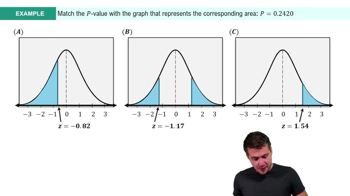Here are the essential concepts you must grasp in order to answer the question correctly.
Census vs. Sampling
A census involves collecting data from every member of a population, providing complete and accurate information. However, it can be time-consuming and costly, especially for large populations. In contrast, sampling involves selecting a subset of the population to estimate characteristics of the whole. This method is often more practical and efficient, particularly when the population is large, as in the case of 55,000 stadium spectators.
Recommended video:
Sampling Distribution of Sample Proportion
Sampling Techniques
Sampling techniques are methods used to select individuals from a population to participate in a study. Common techniques include random sampling, where every member has an equal chance of selection, and stratified sampling, which involves dividing the population into subgroups and sampling from each. The choice of technique affects the representativeness and reliability of the results, making it crucial to select an appropriate method based on the research goals.
Recommended video:
Sampling Distribution of Sample Proportion
Representativeness
Representativeness refers to how well a sample reflects the characteristics of the larger population. A representative sample ensures that the findings can be generalized to the entire population, reducing bias. Factors such as sample size, selection method, and diversity of participants play a significant role in achieving representativeness, which is essential for drawing valid conclusions about the average distance traveled by spectators to the stadium.
Recommended video:
Step 3: Get P-Value Example 3





